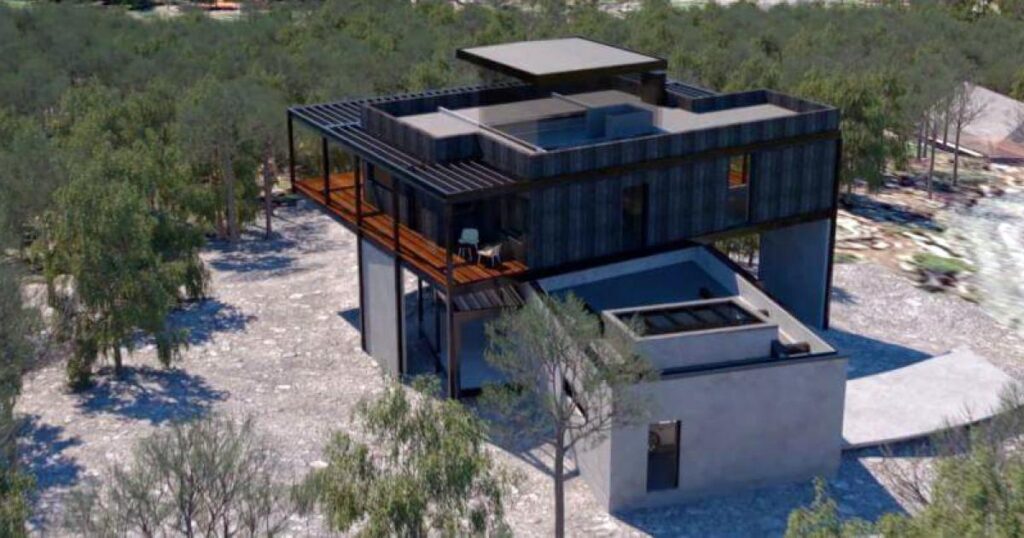
Building a house is a significant investment, and understanding the essential components of its structure is crucial for homeowners, builders, and architects alike. The foundation, roof, and walls are the three primary elements that support the integrity and longevity of a home. In this expert guide, we’ll explore these critical structures, how they interact, and the importance of accurate rita hus draw house and ritning hus – house drawing in the construction process.
The Foundation: The Backbone of Your Home
Importance of the Foundation
The foundation is the most crucial part of any building. It bears the weight of the entire structure and helps distribute that weight evenly across the ground. A well-designed foundation can prevent settling, cracking, and other structural issues that could jeopardize the integrity of the house.
Types of Foundations
- Slab Foundation: A concrete slab is poured directly onto the ground. This type is common in warmer climates and is generally less expensive.
- Crawl Space Foundation: This design elevates the house above ground, allowing for ventilation and access to plumbing and electrical systems.
- Basement Foundation: A deeper foundation that includes a basement, providing additional living space and storage. However, this type can be more costly due to excavation and waterproofing needs.
Designing the Foundation
When it comes to designing the foundation, it’s essential to consider the local soil conditions, climate, and the specific requirements of your home. Accurate ritning hus house drawing is crucial at this stage, as it ensures the foundation is engineered to support the entire structure efficiently.
The Roof: Protecting Your Home
The Role of the Roof
The roof serves as the first line of defense against the elements, protecting your home from rain, wind, snow, and sun. It also plays a crucial role in the overall aesthetic and energy efficiency of the house.
Types of Roof Structures
- Gable Roof: A simple and effective design characterized by two sloping sides that form a triangle at the top. This style is easy to construct and allows for effective water drainage.
- Hip Roof: This type has slopes on all four sides, making it more stable in high winds. Hip roofs are often more complex to build but offer excellent durability.
- Flat Roof: Common in commercial buildings, flat roofs can be used in residential designs, particularly in modern architecture. Proper drainage systems are essential to prevent water accumulation.
Designing the Roof
When designing a roof, it’s important to consider factors such as local weather patterns, desired aesthetics, and energy efficiency. Using advanced roofing materials and proper insulation can significantly improve the energy performance of your home. Again, an accurate rita hus – draw house is critical for creating detailed roof plans that account for these factors.
Wall Structures: The Body of Your Home
Importance of Walls
Walls provide structural support, insulation, and protection from the elements. They also contribute to the overall design and layout of your home, affecting everything from room size to energy efficiency.
Types of Wall Structures
- Load-Bearing Walls: These walls support the weight of the roof and upper floors. They are integral to the structural integrity of the house.
- Non-Load-Bearing Walls: These walls do not support any weight and are used primarily for dividing spaces. They can be more easily modified or removed.
- Insulated Walls: Adding insulation to walls enhances energy efficiency, keeping your home comfortable in all seasons. Various materials, such as fiberglass, foam board, and spray foam, can be used for insulation.
Designing the Walls
Creating effective wall designs requires careful planning and consideration of materials, insulation needs, and the overall aesthetic of the home. Proper ritning hus – house drawing will help visualize wall placement and ensure that all structural and aesthetic requirements are met.
Integrating Foundation, Roof, and Walls
The integration of the foundation, roof, and walls is crucial for building a safe and functional home. Each component must work harmoniously to support the structure while providing insulation, protection, and aesthetic appeal. Ensuring that your designs are accurate and comprehensive through effective rita hus – draw house practices will greatly benefit the construction process.
Key Considerations
- Building Codes: Ensure all designs comply with local building codes and regulations.
- Materials: Select materials that meet your design goals while being cost-effective and sustainable.
- Professional Guidance: Consider consulting with professionals in architecture and construction to ensure that your plans are feasible and well-designed.
Conclusion
Understanding the roles of foundation, roof, and wall structures is essential for anyone involved in the building process. By prioritizing accurate ritning hus – house drawing and effective rita hus – draw house practices, you can create a solid, beautiful, and functional home. Whether you’re a homeowner planning a new build or a builder working on a construction project, this knowledge will help you navigate the complexities of house construction with confidence.
With careful planning and attention to detail, you can ensure that your home is built to last, providing safety, comfort, and style for years to come. Happy building!